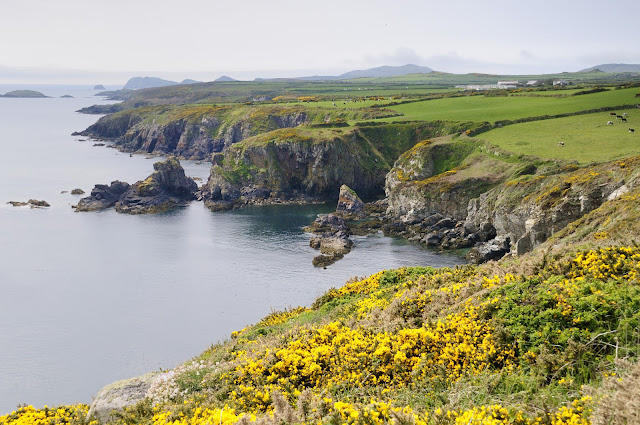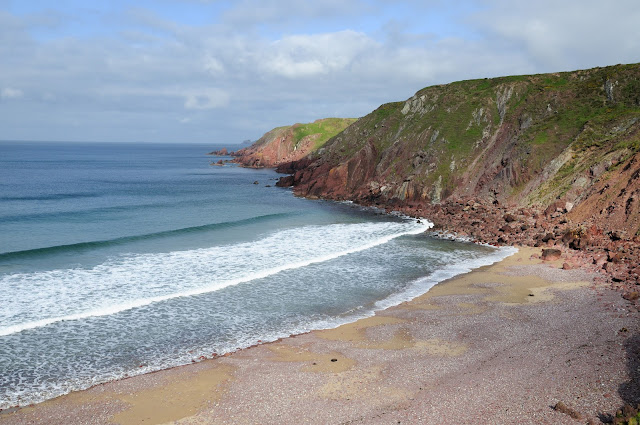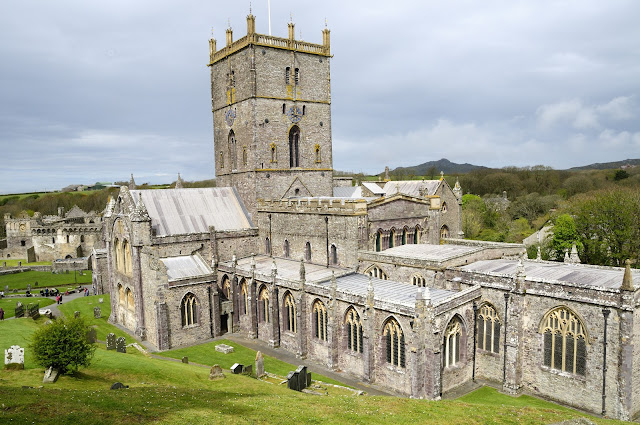Our first visit to Pembrokeshire started at St Davids, the smallest city in the UK in terms of geographical area and population. It is an important ecclesiastical site because of its many historic associations. The monastic community was founded by Saint David, Abbot of Menevia, who died in 589. Between 645 and 1097, the community was attacked many times by raiders, including the Vikings. However, by 1115, with the area under Norman control, King Henry I of England appointed Bishop Bernard as Bishop of St Davids. He began to improve life within the community, and commenced construction of a new cathedral. In 1123, Pope Calixtus II granted Bishop Bernard's request to bestow a papal privilege upon St Davids, making it a centre of pilgrimage for the Western world, the Pope decreeing that "Two pilgrimages to St Davids is equal to one to Rome, and three pilgrimages to one to Jerusalem". The new cathedral was quickly constructed and Bishop Bernard consecrated it in 113...





